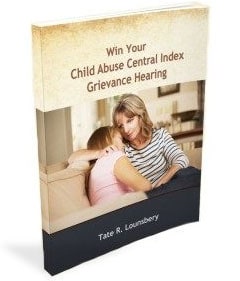Inaccurate Age Assessments of Teens in Pornography
Child Protective Service (CPS) agents don't usually accuse someone of abuse without some form of affirmation. Much of the time, while it might seem like these investigating social workers are trigger-happy, they do attempt to perform some level of due diligence.
CPS social workers investigating an accusation will commonly seek out a doctor’s opinion to decide if something does – in fact – constitute child abuse.
Still, this by no means ensures that the CPS will be correct in their assessment. This reliance on medical expertise has the potential to generate a false accusation of child abuse.
Look at child pornography, for instance, which is a subset of sexual exploitation. As per the findings of one research paper called, there's no scientific process in place to discern whether a participant in pornography is under 18. See Arlan L. Rosenbloom. Inaccuracy of age assessment from images of postpubescent subjects in cases of alleged child pornography. Int. J. Legal Med 2013 Mar; 127(2):467-71. Let’s review the findings presented in this paper.
Can Doctors Predict Age Through Breast Development?One of the primary reasons that doctors struggle in discerning if females are underage in pornography is breast development. Many characteristics are shared between women over and under 18.
The article I’m discussing cites a study of how 16 pediatric endocrinologists evaluated 10 images of adult women from legitimate pornographic websites. These experts assessed the women's maturation levels to determine if they were below the age of 18. On top of that, the doctors stated which of the ladies' features guided their conclusions.
Out of the 160 estimates given, 69% believed the women in the images we under 18 years old.
Furthermore, the doctors’ explanations of what helped them (in their minds) decipher maturation levels varied greatly, depending on the individual. Breast development and facial appearance, though, were predominantly relied upon.
No, we can't say with 100% assurance that all doctors can't evaluate age in pornography accurately. Still, even expert medical testimony in this regard can't be viewed as undoubtedly credible.
Digging Deeper Into the ResearchBreasts and facial features might have been most prevalently deemed essential while evaluating maturity, but doctors also paid attention to body contours, genitalia, and pubic hair.
This finding is as eye-opening as the inaccurate assessments of age. It shows there's no specific set of guidelines to help these “expert medical witnesses” through the process of coming to a conclusion (or guess).
When continuing to shed light on the fact that over 2/3rds of the women had their age incorrectly evaluated downward, more issues arise.
More specifically, one would think that medical professionals are those individuals who should be most able to make accurate estimations on this issue, given their line of work. These errors make us wonder whether "expert opinions" can exist when assessing the age of pornographic actors who might or might not be underaged.
Although there are no studies to suggest that doctors can determine age from a degree of maturation, some still believe they can do so with an acceptable degree of accuracy.
Puberty is Always DifferentPuberty is something that hits everyone in entirely unique ways at different times. There's a 6-year span where pubertal onset can begin. Further complication the issue is the fact that the physical developments of puberty can occur over a 3-to-7-year period in any given individual.
When young adults reach maturity, estimating the age of an individual still isn't possible – when the assessment is based on their development.
Medical doctors typically rely on the Tanner scale of puberty or maturation to categorize degrees of physical maturation. Doctors regard Tanner 4 stage of breast development as a stage typically seen in underage girls (i.e., females under the age of 18). But breast development at Tanner stage 4 is nearly indecipherable from breast development at Tanner stage 5, as proven by the studies.
Expert Analysis Gone WrongThere are clear instances where a doctor's expert testimony in child pornography investigations has proven unreliable in legal scenarios.
In the State of Maryland, during such an investigation, there were certified documents that proved models in 34 photos were adults. Yet the state's expert incorrectly concluded these women were 13 years old or under. In fact, this error in judgment took place while a 27-year-old depicted in one of the pictures sat in the courtroom.
One other scenario saw a man being arrested for possessing child pornography at the airport when returning from South America. The video in question starred a 23-year-old porn actress.
Making this scenario even worse?
A simple online search would have shown the actress was of legal age. Unfortunately, due to the insistence of the government’s medical expert, the performer was forced to come to Puerto Rico to exonerate the innocent man.
Medical “Experts” Shouldn't Be So Confident About Their Input on Child Pornography InvestigationsThe mere act of looking at the females depicted in pornography to compare their physical development to the Tanner stages is not a sufficiently reliable assessment tool to prove that the sexual exploitation of a child has occurred. Over-relying on medical experts for these evaluations promotes the occurrence of false allegations.
In fact, Dr. James Tanner himself (the person who came up with the Tanner stages) published a comment wherein he wrote that any attempt “to estimate probable chronologic age” based on the Tanner stages “is a wholly illegitimate use of Tanner staging: no equations exist estimating age from stage…It is not designed for estimating chronologic age and, therefore, not properly used for this purpose.” See Arlan L. Rosenbloom & James M. Tanner. Misuse of Tanner Puberty Stages to Estimate Chronologic Age. Pediatrics. 1998 Dec; 102(6): 1494, Letters to the Editor. (Comment in Tanner staging and pornography. Pediatrics. 1999 Oct; 104 (4 Pt 1): 995-6.)
 Lounsbery Law Office, PC Home
Lounsbery Law Office, PC Home
